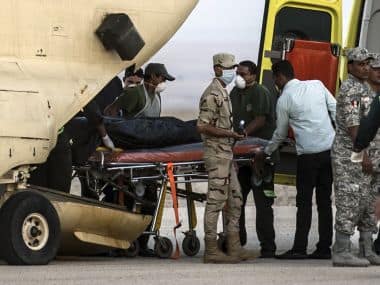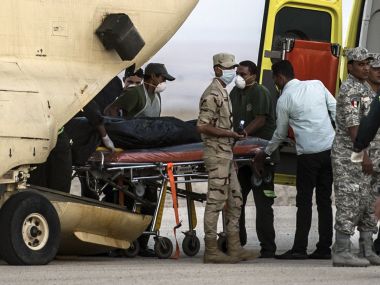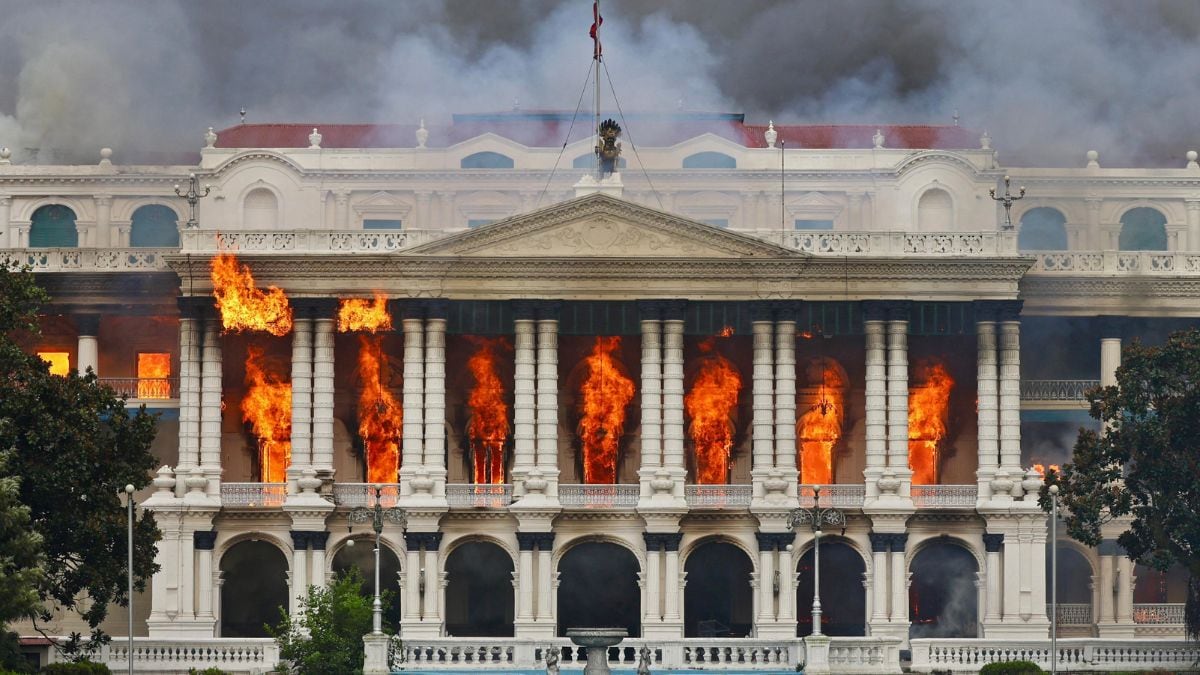International investigators have begun probing why a Russian airliner carrying 224 people crashed in a mountainous area of Egypt’s Sinai Peninsula, killing everyone on board in one of the deadliest Airbus incidents of the past decade. Flags will fly at half mast on official buildings in Russia on Sunday and entertainment television programmes will be cancelled as part of a national day of mourning for the victims, most of them Russians aged from 10 months to 77 years. Cairo and Moscow have both rejected the claim from a militant group affiliated with Islamic State jihadists that it downed the aircraft flown by the Kogalymavia airline, operating under the name Metrojet, en route from Sharm el-Sheikh to St Petersburg. Egyptian Prime Minister Sharif Ismail said experts had confirmed the militants could not down a plane at the 30,000 feet (9,000 metre) altitude the Airbus 321 was flying, while Russian Transport Minister Maxim Sokolov said the claim “cannot be considered accurate”. [caption id=“attachment_2490860” align=“alignleft” width=“380”]  Egyptian paramedics load the bodies of Russian victims of a Russian passenger plane crash in the Sinai Peninsula, into a military plane at Kabret military air base by the Suez Canal on Saturday. AFP[/caption] The plane’s black box data recorders have been recovered and sent for analysis, and late Saturday Sokolov and Russian Emergencies Minister Vladimir Puchkov arrived in Cairo with a team of experts to help with an Egyptian-led investigation. Two air accident investigators from France – Airbus’s home country – are also to travel to Egypt along with six experts from the aerospace giant to help with the probe. Germany’s Lufthansa, Emirates and Air France all said they would halt flights over Sinai until the reasons behind the crash became clear. The plane, carrying 214 Russian and three Ukrainian passengers and seven crew, lost contact with air traffic control 23 minutes after taking off from the Red Sea resort of Sharm el-Sheikh. “Unfortunately, all passengers of Kogalymavia flight 9268 Sharm el-Sheikh-Saint Petersburg have died. We issue condolences to family and friends,” the Russian embassy in Cairo said. ‘Nothing abnormal’ Wreckage and dead bodies were found scattered over an area of six to eight square kilometres (two and a half to three square miles), around 100 kilometres (60 miles) south of the town of El-Arish, Egyptian officials said. The Islamic State affiliate waging an insurgency in the Sinai claimed it brought down the plane in revenge for Russian air strikes against Islamic State in Syria. But experts rejected the idea they would have either the equipment or expertise to hit the charter flight, which an Egyptian official said was flying at some 30,000 feet when communication was lost. To reach a plane at that altitude “you would need hard-to-use missiles, so it seems unlikely,” added Jean-Paul Troadec, former director of France’s BEA aviation investigation agency. “This requires trained people and equipment that IS does not have, to my knowledge.” Experts said a surface-to-air missile strike could have taken place if the aircraft had been descending, but a technical or human error were more likely. An Egyptian air traffic control official said the pilot told him in their last exchange that he had radio trouble, but Civil Aviation Minister Mohamed Hossam Kamal rejected reports that the captain had asked to change course before the crash, saying communications had been “normal”. “There was nothing abnormal… and the pilot didn’t ask to change the plane’s route,” he said. Kogalymavia released a statement offering condolences to the families of the victims and defending the pilot, Valery Nemov, who it said had more than 12,000 hours of flying experience, including 3,860 hours on an Airbus A321. ‘Keep hoping’ Russia has a dismal air safety record, and while larger carriers have started to upgrade their ageing fleets the crash will likely raise concerns about smaller airlines like Kogalymavia. Metrojet said the aircraft underwent safety checks last year, and Russian aviation agency Rosaviatsia said there was “no reason to consider that the cause of the disaster was a technical problem or a crew error”. Russian aviation official Sergei Izvolsky told Interfax news agency the aircraft took off from Sharm el-Sheikh at 5:51 am (0351 GMT) and 23 minutes later failed to make contact with air traffic control in Cyprus. At Saint Petersburg’s Pulkovo airport, family members faced an anxious wait for news. “I will keep hoping until the end that they are alive, but perhaps I will never see them again,” said Ella Smirnova, 25, who had come to meet her parents. The US, France, the UN and Venezuela all offered their condolences to relatives of the victims. The last major air crash in Egypt was in 2004, when a Flash Airlines Boeing 737 plunged into the Red Sea after taking off from Sharm el-Sheikh. All 148 people on board, most of them French, died. Millions of tourists, including many Russians, visit the resort, but an Islamist insurgency has raged in north Sinai since the army ousted president Mohamed Morsi in 2013. Meanwhile, Dubai-based Emirates, the Middle East’s biggest carrier, says it has stopped flying over Egypt’s Sinai until more is known about the crash of a Russian airliner in the rugged peninsula. The airline made the announcement Sunday, the day after the crash of the Russian plane, which had taken off 23 minutes earlier from the popular Red Sea resort town of Sharm el-Sheikh. All 224 people on board died. Two major European airlines, Germany’s Lufthansa and Air France, said Saturday that they would immediately stop flying over Sinai for safety reasons until the cause of the crash was determined. AFP
International investigators have begun probing why a Russian airliner carrying 224 people crashed in a mountainous area of Egypt’s Sinai Peninsula, killing everyone on board in one of the deadliest Airbus incidents of the past decade.
Advertisement
End of Article
Written by FP Archives
see more


)

)
)
)
)
)
)
)
)



